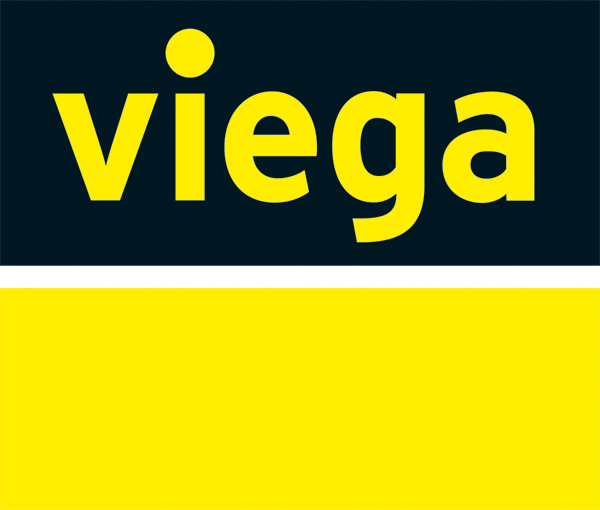Following solid revenue growth in 2013, the majority of U.S.-based engineering and engineering/architecture (EA) firms expect more of the same this year, according to BD+C’s 2014 Giants 300 report. Of the 68 engineering and EA firms that reported a forecast for 2014, 56 companies expect revenue to be higher, with the average growth rate at nearly double digits (9.1%). The same group saw revenue increase 16% on average in 2013.
As the green building movement shifts focus from the new construction sector to existing buildings, engineering firms are well positioned to capitalize on the influx of dollars heading into the reconstruction and retrofit markets. Firms, in turn, are adding services like commissioning (BECx, Cx, and RCx), energy retrofit design, energy auditing, energy modeling, and facilities management consulting in an effort to cater to this growing segment.
San Francisco-based Mazzetti is seeing growth from its recently launched facilities management consulting business, especially on the East Coast. The firm works directly with building owners and their facilities teams to assess how their facilities can operate more efficiently. Mazzetti also advises owners on the best ROI in terms of equipment replacement or repair.
TOP ENGINEERING FIRMS
2013 Engineering Revenue ($)
1 Fluor Corporation $585,150,000
2 Arup 136,464,506
3 Day & Zimmermann 130,576,072
4 WSP Group 124,400,000
5 Affiliated Engineers 104,121,000
6 KPFF Consulting Engineers 94,025,000
7 Syska Hennessy Group 93,902,508
8 Vanderweil Engineers 80,334,000
9 Simpson Gumpertz & Heger 71,640,000
10 AKF Group 67,487,000
SEE FULL LIST
TOP ENGINEERING/ARCHITECTURE FIRMS
2013 EA Revenue ($)
1 Jacobs $3,684,260,000
2 AECOM Technology Corp. 1,769,120,000
3 Parsons Brinckerhoff 316,350,284
4 URS Corp. 280,333,336
5 Burns & McDonnell 160,922,332
6 Thornton Tomasetti 145,038,225
7 SSOE Group 114,501,762
8 CRB 96,860,000
9 Wiss, Janney, Elstner Associates 88,887,000
10 Dewberry 78,770,181
SEE FULL LIST
“We often grow this relationship into more of a capital planning consultant role,” says Walt Vernon, PE, LEED AP, EDAC, Principal and CEO of Mazzetti. “The results are that we have significantly grown our Nashville office, because we’ve increased our work. We’ve hired specialists in this area, which creates a new service line for us.”
Giants 300 coverage of Engineering Firms brought to you by Viega www.viega.us
For TLC Engineering for Architecture, increased emphasis on energy and water services, especially energy audits, is paying dividends. The firm has dedicated staff in each operating unit to focus on these services, with huge success, according to the firm’s CEO and Chairman, Debra A. Lupton, AIA, LEED AP BD+C.
Seeing a growth in demand for water design services, Magnusson Klemencic Associates developed its proprietary Strategic Water Planning tool (http://tinyurl.com/MKAwater) to aid in the assessment and optimization of a project’s global water supplies and demands. The tool takes into account the characteristics of a project—including the site, building type, size, and location—to provide a comprehensive, holistic, and accessible picture of water inputs and outputs, such as stormwater runoff, precipitation, wastewater, evaporation, potable water, and ground infiltration.
The firm has utilized the tool to develop net-zero-water design schemes for several projects, including the Sylvan Theatre at the base of the Washington Monument in Washington D.C.
BIM/VDC/IPD GROWTH
Advanced project modeling and team collaboration continue to play a vital role on engineering projects. More than three-quarters (76%) of the engineering firms that participated in the Giants 300 survey reported at least some design revenue from BIM/VDC-driven building projects. These firms report that, on average, 47% of their total design billings in 2013 were derived from BIM/VDC-driven projects.
Several firms reported innovations in this area:
HNTB has developed a BIM workflow that allows its aviation clients to quickly transfer both geometric and non-geometric data from a project’s BIM model directly into their facility management system, like Tivoli Maximo Asset Management. The process was employed most recently on the Denver International Airport’s Hotel and Transit Center Program. The facilities team plans to use the BIM data for ongoing operations and maintenance management, as well as feasibility studies and planning for future projects on the site.
The firm’s sports practice launched a fully parametric design tool that replaces its 2D bowl and sightline design program. The new tool allows for fast, dynamic design iteration in a 3D BIM environment.
Thornton Tomasetti, through its Core Studio computational modeling and R&D group, has developed dozens of breakthrough engineering design and analysis tools, including a cloud-based, rapid-iterative design program (see BIM Giants section, page 54), building performance analysis software, and a series of custom plug-ins for commercially available BIM/VDC/CAD tools. Custom plug-ins include a parameter explorer, a suite of automated drawing production tools, and programs that check and improve the accuracy and quality of BIM models. Core Studio also builds physical prototypes using its in-house 3D printer.
Robins & Morton is carving out a niche in the emerging integrated project delivery (IPD) field. The construction and engineering giant has worked on four pure IPD projects with multi-party agreements—including the Alfond Center for Health at MaineGeneral Medical Center in Augusta, Maine, a BD+C 2014 Building Team Award winner—and completed 44 projects utilizing many of the elements and management practices of the IPD approach.
Read BD+C's full 2014 Giants 300 Report
Related Stories
Building Technology | Jun 18, 2024
Could ‘smart’ building facades heat and cool buildings?
A promising research project looks at the possibilities for thermoelectric systems to thermally condition buildings, writes Mahsa Farid Mohajer, Sustainable Building Analyst with Stantec.
University Buildings | Jun 18, 2024
UC Riverside’s new School of Medicine building supports team-based learning, showcases passive design strategies
The University of California, Riverside, School of Medicine has opened the 94,576-sf, five-floor Education Building II (EDII). Created by the design-build team of CO Architects and Hensel Phelps, the medical school’s new home supports team-based student learning, offers social spaces, and provides departmental offices for faculty and staff.
Healthcare Facilities | Jun 18, 2024
A healthcare simulation technology consultant can save time, money, and headaches
As the demand for skilled healthcare professionals continues to rise, healthcare simulation is playing an increasingly vital role in the skill development, compliance, and continuing education of the clinical workforce.
Mass Timber | Jun 17, 2024
British Columbia hospital features mass timber community hall
The Cowichan District Hospital Replacement Project in Duncan, British Columbia, features an expansive community hall featuring mass timber construction. The hall, designed to promote social interaction and connection to give patients, families, and staff a warm and welcoming environment, connects a Diagnostic and Treatment (“D&T”) Block and Inpatient Tower.
Concrete Technology | Jun 17, 2024
MIT researchers are working on a way to use concrete as an electric battery
Researchers at MIT have developed a concrete mixture that can store electrical energy. The researchers say the mixture of water, cement, and carbon black could be used for building foundations and street paving.
Codes and Standards | Jun 17, 2024
Federal government releases national definition of a zero emissions building
The U.S. Department of Energy has released a new national definition of a zero emissions building. The definition is intended to provide industry guidance to support new and existing commercial and residential buildings to move towards zero emissions across the entire building sector, DOE says.
Multifamily Housing | Jun 14, 2024
AEC inspections are the key to financially viable office to residential adaptive reuse projects
About a year ago our industry was abuzz with an idea that seemed like a one-shot miracle cure for both the shockingly high rate of office vacancies and the worsening housing shortage. The seemingly simple idea of converting empty office buildings to multifamily residential seemed like an easy and elegant solution. However, in the intervening months we’ve seen only a handful of these conversions, despite near universal enthusiasm for the concept.
Healthcare Facilities | Jun 13, 2024
Top 10 trends in the hospital facilities market
BD+C evaluated more than a dozen of the nation's most prominent hospital construction projects to identify trends that are driving hospital design and construction in the $67 billion healthcare sector. Here’s what we found.
Adaptive Reuse | Jun 13, 2024
4 ways to transform old buildings into modern assets
As cities grow, their office inventories remain largely stagnant. Yet despite changes to the market—including the impact of hybrid work—opportunities still exist. Enter: “Midlife Metamorphosis.”
Affordable Housing | Jun 12, 2024
Studio Libeskind designs 190 affordable housing apartments for seniors
In Brooklyn, New York, the recently opened Atrium at Sumner offers 132,418 sf of affordable housing for seniors. The $132 million project includes 190 apartments—132 of them available to senior households earning below or at 50% of the area median income and 57 units available to formerly homeless seniors.


















